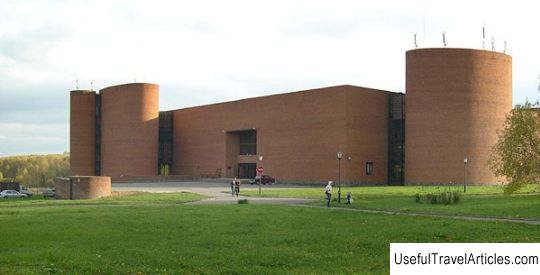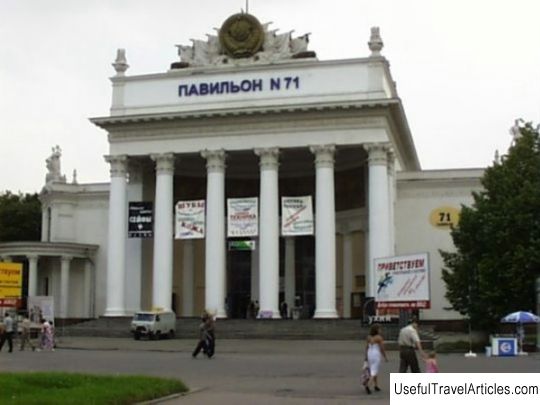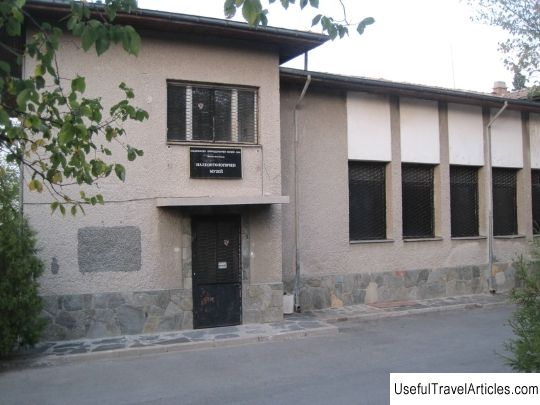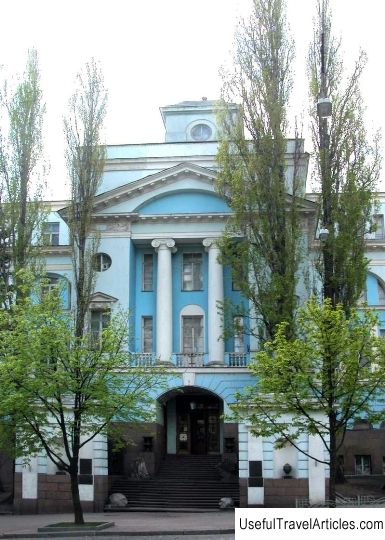Paleontological Museum description and photos - Russia - Moscow: Moscow
Rating: 8,0/10 (232 votes) 
Paleontological Museum description and photos - Russia - Moscow: Moscow. Detailed information about the attraction. Description, photos and a map showing the nearest significant objects. Photo and descriptionPaleontological Museum named after Yu.A. Orlova is one of the largest natural history museums in the world. The history of the museum began with the Kunstkamera, which was founded in 1716 by Peter I. Finds of fragments of skeletons of prehistoric animals came to the Kunstkamera. The modern building of the Paleontological Museum is a unique museum complex built of red brick. The complex has a courtyard. The facade of the building is decorated with round towers at the corners. The project was developed specifically for the Paleontological Museum. The exposition area of the museum is approximately 5000 sq. m. Diverse, very interesting design of the exhibition halls, makes it possible to feel the secrets of the past. In six halls of the museum there are exhibits, consistently telling about the history of life on Earth. The exhibits presented in the museum are the work of several generations of paleontologists. They were collected in Russia and abroad. Each exhibit has its own history. In the first (introductory) hall, visitors see the skeleton of a mammoth. It is a symbol of Russian paleontology. The skeleton was found in Siberia in 1842 by the industrialist Trofimov. The skeleton was carefully transported to Moscow. It became a unique gift to the Moscow Society of Naturalists. Next comes the Precambrian and Late Paleozoic Hall, which introduces the most ancient organisms on Earth. A slab is exhibited here, on which there are imprints and traces of the movement of ancient multicellular soft-bodied organisms. Their age is impressive. It is over 550 million years old. In the Moscow Hall you can get acquainted with the geological history of the Moscow region. You can see animals that lived in the Moscow region in different geological epochs. The Severo-Dvinsk gallery of reptiles, collected in 1898-1914, is presented in the hall of the late Paleozoic. Professor Amalitsky. From the latest finds, a slab with traces of reptiles - pareiasaurs - can be distinguished. In the Mesozoic Hall, you can see the skeletons and skulls of carnivorous dinosaurs and herbivores. They were found on the territory of Mongolia by a joint Soviet-Mongolian expedition. In the same room is the largest exhibit - a cast of the skeleton of a Jurassic diplodocus from the United States. It was presented in 1913 to Tsar Nicholas II for the 300th anniversary of the Romanov dynasty. The skeletons of flightless birds are also of great interest. The last hall of the museum displays exhibits demonstrating the diversity of ancient mammals. Here you can see the skeleton of a giant hornless rhinoceros - indricotherium, mastodon - gomphotheria, cave bears and a large-horned deer with one and a half meter horns. The exposition ends with a story about ancient people. A cast of the skeleton of an Australopithecus from Africa, as well as a stone with drawings of ancient people are exhibited here.        We also recommend reading Ardagger description and photos - Austria: Lower Austria Topic: Paleontological Museum description and photos - Russia - Moscow: Moscow. |




